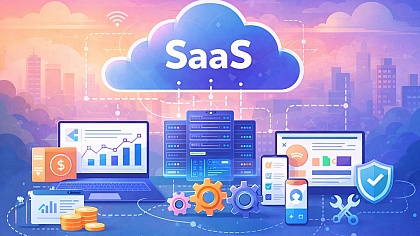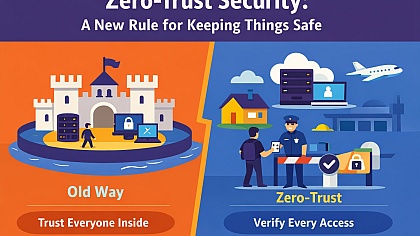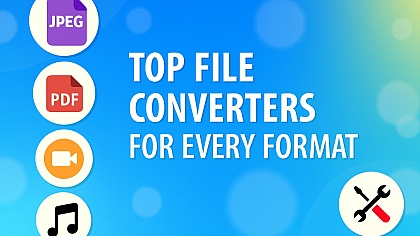
What is eCommerce?
The first step to taking the plunge into the world of e-commerce is to ask one simple question: What is e-commerce?
eCommerce is the act of buying and selling over the Internet. If you are making commercial transactions online, you are already engaging in some form of e-commerce.
That said, we can now take a further leap into the deep end and learn all about what the eCommerce industry entails, how it all started, what types of eCommerce there are, as well as what eCommerce can do for you.
The History of eCommerce
eCommerce has come a long way since its humble beginnings back in the 90s when the Internet officially opened to commercial use. These days, eCommerce transactions account for billions of pounds of sales each year, and this amount is only on the increase.
However, it all kicked off from a single transaction in 1994 when a Sting CD was sold from one friend to another, something we would now call a C2C eCommerce transaction (we will come to that shortly).
Before this, the original concept of e-commerce was created by Michael Aldrich in 1979. He marketed his e-commerce system as a Business-to-Business (B2B) solution within the UK and parts of Europe in 1980, which originally consisted of a modified television set, combined with a telephone line and a real-time transaction processing computer.
It wasn’t until 1992 that a dial-up bulletin board system was used as an online bookstore known as Book Stacks Unlimited, by Charles M. Stack, who went on to own Books.com on the Internet two years later, only to attract thousands of visitors and make massive sales. Afterwards, the company was bought by Barnes & Noble.

During the mid-90s, online marketplaces began to emerge, and in 1995, Amazon.com was launched as an online bookstore that didn’t face the same physical limitations as its brick-and-mortar bookshop competitors. This led to Amazon increasing its product range beyond books, and it is now the world’s largest online retailer of electronics, toys, food, clothing, furniture, as well as digital products such as eBooks, music, and video downloads.
Not only did Amazon provide a platform for B2B, B2C as well and C2C eCommerce transactions, but eBay also debuted in 1995, followed by Etsy in 2005. Now the web is home to many online selling platforms which are well suited to both businesses and individual sellers alike, allowing them to trade new, used, and niche items in a secure environment, with a good flow of traffic and fair mediation if a dispute arises, which gives buyers the confidence to part with their hard-earned money over the Internet.
Along with the evolution of e-commerce came the expansion of online payment solutions and m-commerce (mobile commerce).
PayPal began handling payments on behalf of eCommerce businesses in 1998, and they now allow their customers to send, receive and store funds globally across 200 countries in 26 different currencies.
Although Amazon launched its first mobile commerce website in 2001, it is the recent innovations in smartphone technology and the thriving social media culture that have massively boosted online sales through the use of mobile phones. People are now buying and selling online through hand-held devices such as mobiles and tablets, rather than just desktop and laptop computers.

What are the different categories of e-commerce?
There are three main types of e-commerce to engage in:
Physical Items – Typically, online merchants sell a range of products that can be delivered to their customers’ doors or arranged for collection. In this generation, it is now the norm to purchase clothes, electronics, gifts, and even daily essential items online. Shoppers simply add items to their online shopping carts or baskets, go through a secure checkout environment, and their order is placed.
Services – Everyone from website design companies to freelancers is now providing their services over the Internet. People pay for services such as online tuition, subscription memberships, domain registration, and shared server hosting.
There are famous websites which serve as a platform for freelancers selling their services, which include everything from article writing to graphics design.
Digital Products – Intangible goods are the easiest things to sell over the Internet and can make for highly profitable business ideas.
Digital Products that online merchants sell include eBooks, downloadable music and videos, stock photography, and computer software.
These three types can be broken down into six further categories:
Business-to-Business (B2B) – When one business provides its goods or services to another. This sort of e-commerce usually involves bulk quantities, wholesale pricing, and industry-standard equipment, which would be overwhelming to an individual buyer.
Good examples of this would be the online purchase of office supplies, medical equipment, and wholesale products such as sportswear directly from the manufacturers.

AliBaba.com is an Internet-based marketplace that uses an eCommerce platform for manufacturers and wholesale suppliers in China to sell in bulk quantities to their customers around the world.
Business-to-Consumer (B2C) – The most well-known type of eCommerce, where sales take place as they would on a traditional brick-and-mortar shop floor between a business and a customer, except for the fact that everything is done via the Internet.
There is a vast range of products and services available online for the general consumer, some of the most popular being electronics, clothing, and giftware, while some of the most popular services people tend to pay for are flights, online tutoring, and subscriptions.
Consumer-to-Consumer (C2C) – Lots of people seek to sell online; however, not everyone needs their bespoke eCommerce website.
Online selling platforms such as eBay allow consumers to sell on a smaller scale to other consumers in a secure environment, which is ideal for the sale of used goods and one-off items.
Consumer-to-Business (C2B) – Contrary to typical B2C transactions, consumer-to-business transactions occur when a consumer gives value to a business by offering a service.
A good example of this is when a company pays a blogger to promote its product or service to increase brand awareness.
Business-to-Administration (B2A) or Business-to-Government (B2G) – eCommerce has revolutionised the world in such a way that even governments and public administrations have turned to the Internet for many of their business solutions, too.
An example of this would be when an administration or government uses a third-party business for digitising its application submissions to enable the public to submit them online, rather than the conventional, slower paper methods.
Consumer-to-Administration (C2A) – Consumers can now make payments to public administrative bodies and governments online, thanks to the e-commerce solutions that are available to the world.
An example of a C2A eCommerce transaction would be a consumer paying taxes directly to the government using an online payment system.

What are the Benefits of e-commerce?
The innovation of eCommerce has increased the benefits and business opportunities for all those who take part in it, and for businesses that have not taken that step forward into the world of eCommerce yet, there are clear disadvantages. So, what are the benefits of e-commerce?
The Ability to Reach a Global Market
An e-commerce website doesn’t have the same physical limitations as a brick-and-mortar shop. With an e-commerce website, you can increase your brand awareness to expand your customer base across the country or even around the world, as anyone who has access to the Internet can potentially make a purchase. This is particularly advantageous to mail-order businesses and those who sell digital products and services.
Open all hours
Sellers can enjoy an increase in turnover because their online shop can be left open 24 hours a day, 7 days a week, and 365 days per year. Sellers can generate sales while they sleep! Likewise, buyers have the advantage of shopping online from the comfort of their own homes at any time of day or night. This is extremely practical for people who are at work during peak hours, or for those who face difficulty in going out shopping, which can be for several personal reasons.
Lower overheads
Online shops require minimal attention compared to brick-and-mortar shops. Fewer staff would be needed to run it, and the overheads are significantly lower compared to having to rent and maintain a physical establishment.
The Ability to Work From Anywhere in the World
If you have access to the Internet and a computer or device such as a tablet or even smartphone, you can control your eCommerce website from anywhere in the world due to it being run on a web-based control panel. A successful eCommerce business can mean that you don’t have to sit in an office all day or have the hassle of the 9 5 rush hours back and to.
Inventory Management
An eCommerce control panel helps you to carry out and maintain a full stock check of your products, so you can be aware of when stock levels are too low, so that you can reorder in time to not miss out on sales.
Targeted Marketing
When customers place an order online, they leave their names and contact details, which will enable sellers to offer them a more personalised shopping experience. Adding a friendly touch to correspondence by including the customer’s first name goes a long way, and if they subscribe to newsletters, over time, sellers will gain a list of customers with whom they can potentially generate more sales.
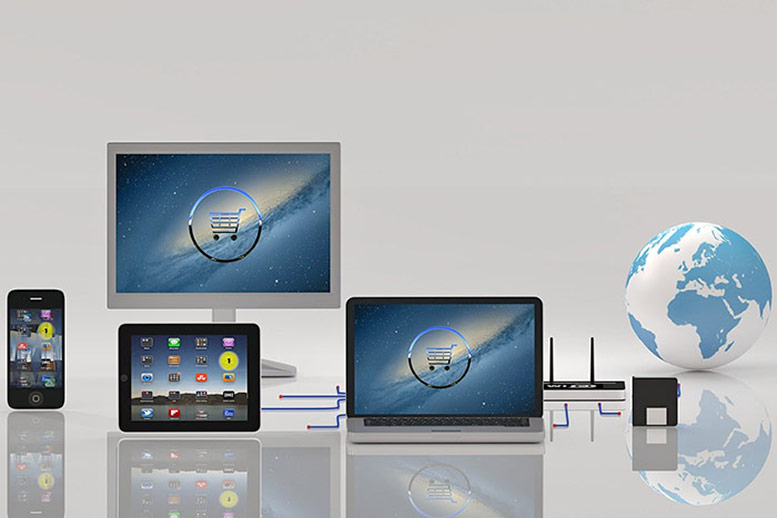
Which E-commerce Platform Should I Go for?
There are three types of selling platforms that you can choose from: an online marketplace, a readymade eCommerce platform, or your own bespoke (tailor-made) eCommerce website.
So what is the difference?
Online marketplaces such as eBay or Amazon give you the ability to sell alongside other sellers. While it seems like a promising idea considering you can get your products online somewhat instantaneously, on an already established website that has a high flow of traffic, the downside is that you will lose out on brand awareness, there is high competition, and most importantly, heavy fees. If you add up the cost of these fees alone over time, according to the volume of your sales, you could have acquired your bespoke online shop for a similar amount of money and still have something to show for it.
Readymade open-source eCommerce platforms such as Shopify or Magento allow you to trade over the Internet using the tools to set up an online shop by yourself fairly quickly. However, open-source eCommerce web development platforms tend to lack personalisation compared to bespoke websites. Furthermore, the monthly costs of running them will build up over time to eventually cost even more than paying for your website to be professionally developed, just like trading in an online marketplace, as we have previously mentioned.

Bespoke eCommerce websites are unbeatable when it comes to flexibility, as they are custom-made to suit your needs.
The sky is the limit when you have your custom-made online shop, as features and functions that may be impossible on the two previously mentioned platforms become possible.
A bespoke online shop website will give your brand more recognition and individuality as they have a unique layout with is designed according to your preferences, instead of being designed according to a prebuilt framework.
Once you have made the initial investment of acquiring a fully functional, bespoke eCommerce website, your online shop will practically run itself. With minimum maintenance required, the upfront cost of an eCommerce shop is well worth the benefits of having no geographical limitations, the reduction of overhead costs, the reduction of employment costs, and most importantly, the increased number of customers to your business.
Having a bespoke eCommerce website will also save you money on advertising costs in the long term, as they are built to load faster and are more search engine friendly when professionally designed. Additionally, integrating Generative AI in eCommerce can enhance your custom website with smart content creation, automated product descriptions, and personalised landing pages.
A bespoke eCommerce website can help you to sell your products or services online, while at the same time giving you the administrative tools to manage your customer base, run a blog alongside your shop, as well as maintain a healthy relationship with other relevant websites, all in one easy-to-use control panel.
eCommerce Control Panel Features
A good, web-based control panel that has a user-friendly interface is highly beneficial for your eCommerce business and will streamline handling orders, inventory, and website content anywhere you go. It's the one-stop solution for running your business, blog, and marketing all in one interface.
Orders and Sales
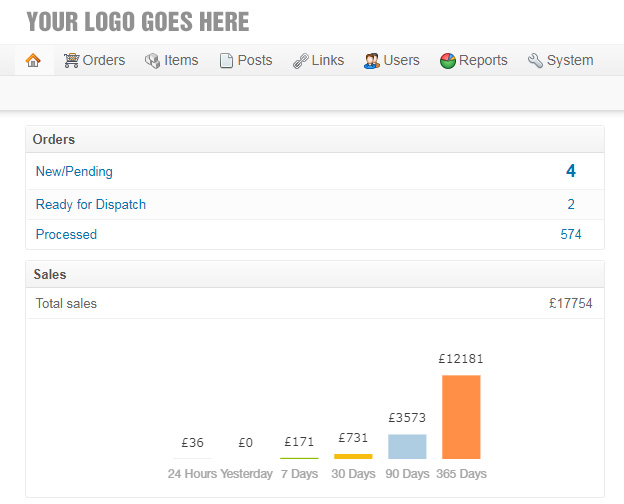
The admin control panel dashboard gives an insight into every aspect of your business at a glance; also, the responsive design means that no matter what device you use to view it, the organised layout won't be compromised. This is perfect for keeping up to date with your business while you are on the go.
See how many orders need to be processed, how many of them are awaiting dispatch, and how many have already been completed, along with a bar chart that displays your business turnover in daily, weekly, monthly, triannually, and yearly increments.
Database Record Count

Keep track of how many records have been created, including inventory records and their categories, blog posts, pages, directory listings, links to other websites, and all their relevant categories, as well as customer signups and subscriptions.
Comments and Notes

View notifications of unapproved user comments to speed up the moderation process.
There is also a useful section for compiling lists of important notes; this section is in yellow so that it is noticeable every time you check the dashboard.
Order Fulfilment
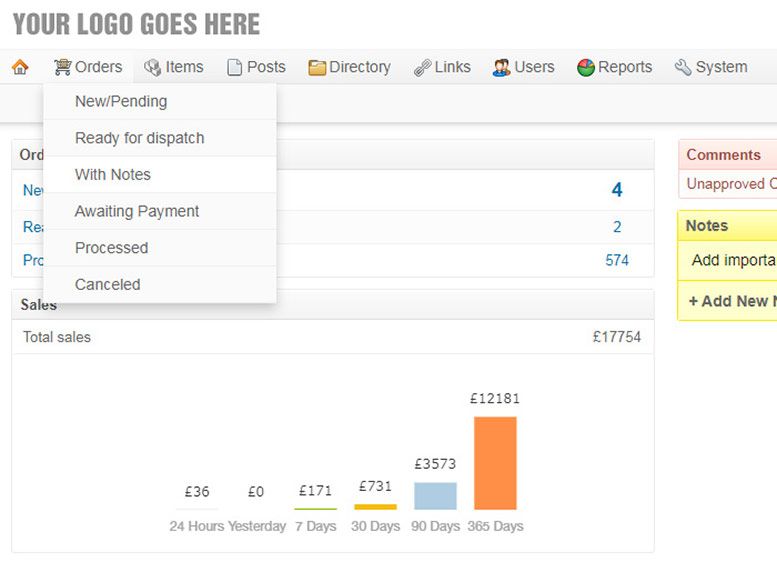
View new order records with all the information required to fulfil the order, access order records with important notes added, while at the same time having easy access to orders that are awaiting payment or shipment and orders that have already been processed.
You can also keep an eye on cancelled orders and reach out to customers to decrease checkout abandonment.
Inventory Management
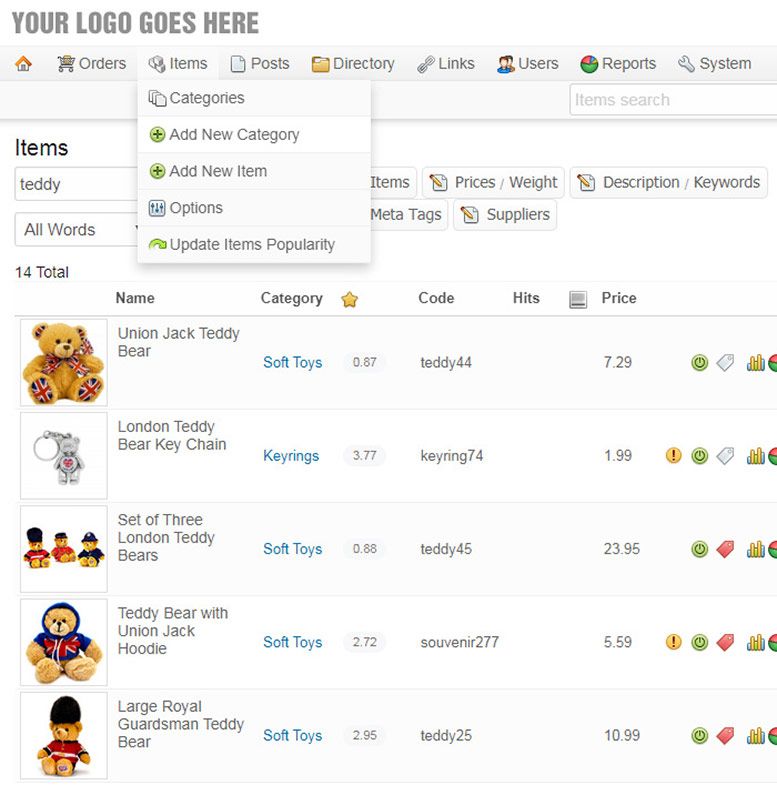
With the capability to add unlimited products, the control panel makes it easy to keep a stock check and manage pricing, product images, weights, and descriptions with options for sizes, colours, and other product variations.
Blog Posts and Pages
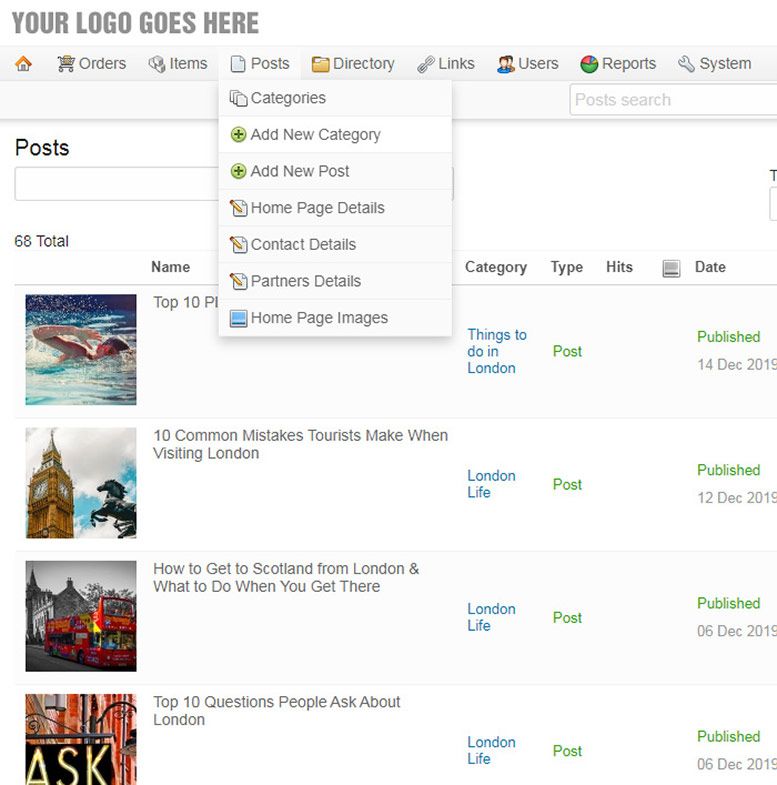
Upload and edit blog posts and dynamic pages, including home and contact page text.
Directory Listings
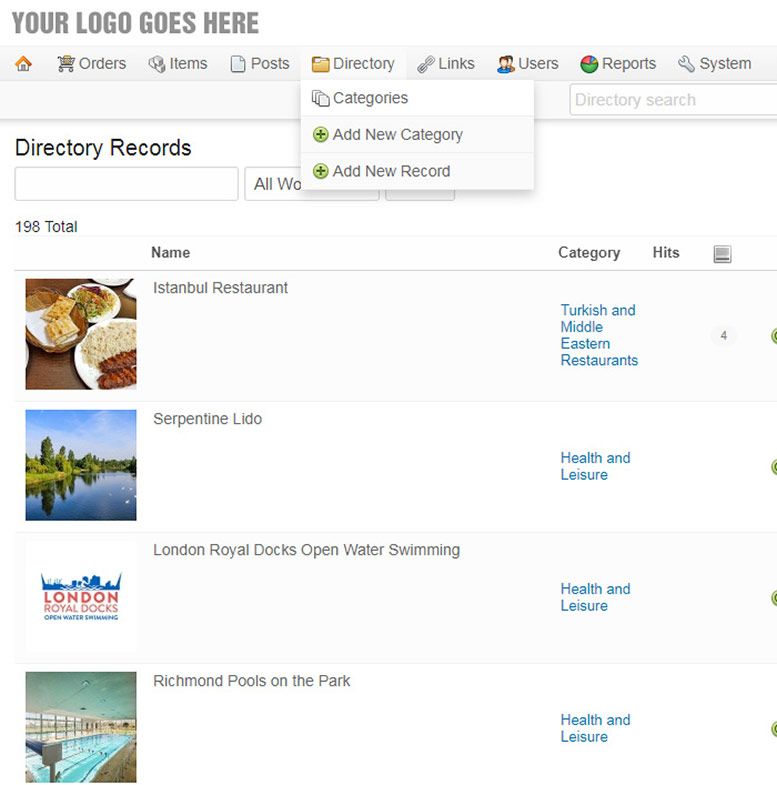
Easily create directory listings for your website, each listing has an integrated map that shows the location of a venue when you add the postcode, as well as the option to upload multiple images per listing.
Link Management

Add links to other websites to share resources or gain relevant links to your website.
Users
View confirmed and unconfirmed user accounts as well as user comments in this section.
Reports

View reports on searched keywords to increase awareness of what the visitors to your website are looking for and gain the insights and knowledge you need to help your business flourish, along with a yearly sales comparison chart and an easy-to-decipher graph of your sales progress.
System Settings
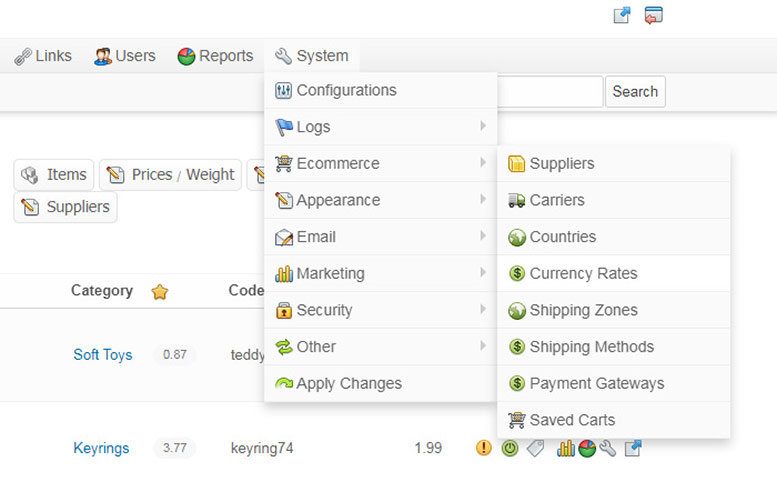
The control panel gives you the ability to change system settings and configurations by yourself as well as the options to add and update shipping prices, carriers, and supplier lists, manage payment gateways, edit administration logins, and view saved user baskets.
You can also manage email templates and view subscribed emails from here, along with many other technical options.
Get an eCommerce Website.
With our affordable web design packages, we can provide you with bespoke eCommerce solutions to get you to accept payments online as well as grow your business at the same time.
- Ecommerce Standard
- 50 Products
- Free Logo Design
- Content Management System
- Unlimited Pages
- Responsive (Mobile Friendly)
- Bespoke (No Templates)
- Website Contact Form
- 1 Year Hosting
- 3 Email Accounts
- -
- SSL Certificate
- Social Media (Integration)
- Built in SEO (Standard)
- UK Based Technical Support
- UK Based Dedicated Designer
- £20 per month
- Ecommerce Unlimited
- Unlimited Products
- Free Logo Design
- Content Management System
- Unlimited Pages
- Responsive (Mobile Friendly)
- Bespoke (No Templates)
- Website Contact Form
- 1 Year Hosting
- 5 Email Accounts
- Domain Registration
- SSL Certificate
- Social Media (Integration)
- Built in SEO (Advanced)
- UK Based Technical Support
- UK Based Dedicated Designer
- £25 per month
We have looked into how the world of eCommerce came about, its different forms, and the added benefits of taking your business to the web, plus the even further benefits of having your bespoke eCommerce website.
Whether you are just starting out or already taking part in the e-commerce industry and want to take your business venture to the next level, we can help you. Contact us for more information on how to get your business up and running online or how we can work with you to improve your existing e-commerce presence.

